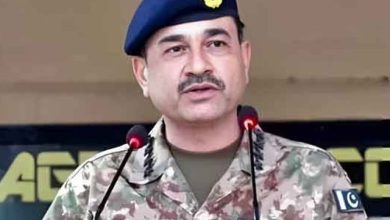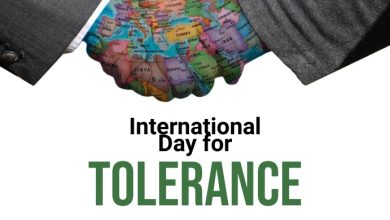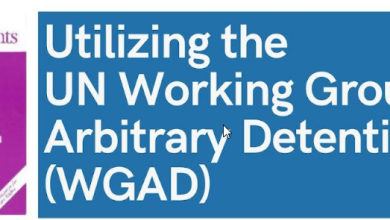The Jammu Massacre of November 1947: A dark chapter for Kashmiri Muslims
By: Muhammad bin Abbas
 “Those who cannot remember the past are condemned to repeat it.” This immortal aphorism of George Santayana has held especially true in the case of Kashmir, bringing to mind both the forgotten cruelty in its bloody history as well as the new injustices sparking up therein today. The tragedies of the Jammu Massacre of 1947 saw thousands upon thousands crying out in terror-stricken voices, yet no voice at present is willing to raise a clarion call for their remembrance–or condemn the parties involved.
“Those who cannot remember the past are condemned to repeat it.” This immortal aphorism of George Santayana has held especially true in the case of Kashmir, bringing to mind both the forgotten cruelty in its bloody history as well as the new injustices sparking up therein today. The tragedies of the Jammu Massacre of 1947 saw thousands upon thousands crying out in terror-stricken voices, yet no voice at present is willing to raise a clarion call for their remembrance–or condemn the parties involved.
Since 1846, under the Dogra dynasty, Kashmiri Muslims and lower castes faced severe exploitation by upper-caste Hindu landlords, or jagirdars, who seized 75% of their produce and often used force to confiscate property. Shrines and mosques were taken over by the ruling class, and attempts to reclaim these sites were met with resistance from Hindu Pandits, worsening communal divides. The Dogra regime’s oppressive rule sparked widespread protests, notably in the 1931 uprising, marking a critical political awakening among Kashmiri Muslims. This discontent grew stronger by 1947, as Maharaja Hari Singh’s controversial accession to India on October 26 was met with intense opposition from Muslims who, given Kashmir’s geographical and cultural ties to Pakistan, desired to join the newly established Muslim state. This demand, however, was brutally suppressed by the state, setting the stage for further conflict.
On November 6, 1947, a brutal massacre unfolded in the Jammu region, targeting thousands of Kashmiri Muslims. There are numerous accounts of organized attacks against Muslim villages, with entire communities forcefully driven from their homes, leaving behind all they had. The region saw systematic killings as mobs swept through villages, taking countless lives in what appeared to be a deliberate attempt to drive the Muslim population from their ancestral lands. This massacre, often framed as a state-sponsored campaign, was aimed at creating a demographic shift in Jammu, aligning the region more closely with non-Muslim majority areas. Journalists and historians have documented how many Muslims were forced into exile, seeking safety across the newly drawn borders, often undertaking perilous journeys only to face further hardship.
Following the initial wave of violence in early November 1947, the intensity of the Jammu massacre escalated as a systematic effort emerged to eliminate and displace the Muslim population. Reports indicate that thousands of Muslims were rounded up in what appeared to be coordinated attacks across Jammu, while accounts from survivors describe the brutality inflicted upon entire villages. Estimates suggest that around 250,000 Muslims lost their lives or disappeared in the massacre, marking it as one of the most severe instances of communal violence in the region. Several accounts document that Muslim residents were misled with false promises of safe passage, only to be ambushed along migration routes. The Daily Telegraph’s correspondent at the time reported how Sikh and Hindu militias, armed by state authorities, instigated these attacks. Muslim lands were seized, and properties destroyed in what many historians believe was a planned demographic restructuring, intended to reduce the Muslim presence in Jammu.
In the wake of the massacre, the Muslim population of Jammu drastically declined as survivors sought refuge in Pakistan or were displaced to remote regions. The Jammu massacre is viewed by many historians and human rights advocates as a targeted ethnic cleansing, reshaping Jammu’s demographic landscape and serving as a reminder of the human costs of communal hatred and state-sponsored violence.
The thousands of non-fatal casualties, abductions, and disappearances accompanying the already horrific acts of violence that were carried out were equally devastating, as was the burning of homes and general destruction caused by the troops. A particularly disturbing instance took place after the Pakistan government’s attempt to aid refugees by sending buses to Jammu city with the aim to transport them to Sialkot. The company of refugees was ambushed en-route to their destination by Dogra troops and armed Sikhs, who went on to murder the men and take the women. Such vicious attacks even after glimpses of hope and refuge were far from uncommon, and only instilled fear and stress into the more fortunate Kashmiris who had escaped or avoided them thus far.
This gross misconduct of power and blatant attempt to create an imbalance in the demographics of the region was enacted so quickly that the true extent of its brutality was seldom realized in the grand scheme of things. The terrorized Kashmiris on the other hand felt each and every attempt of erasure to the core. As Israr Ahmed Khan, whose relatives had struggled through the massacre, told Al-Jazeera: “To be honest that was a mad period. There was no humanity shown at that time.”
The events of November 1947 left a lasting scar on the collective memory of Jammu and Kashmir’s Muslim population. The massacre, which some historians describe as genocidal, underlines the severe consequences of communal violence and the tragic repercussions of Partition-era decisions that reshaped the destinies of entire communities.
 Muhammad Bin Abbas is student Beacon House Islamabad and intern at Kashmir Institute of International Relations.
Muhammad Bin Abbas is student Beacon House Islamabad and intern at Kashmir Institute of International Relations.








